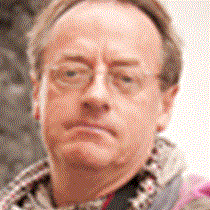Delos & Mykonos Islands, Greece
An azure sky and invigorating breeze greeted the National Geographic Endeavour as we positioned a little offshore of the small Cycladian island of Delos. This is the reputed birthplace of Apollo, whose mother Leto had fled from the wrath of Hera, the infuriated wife of Zeus, who searching for a safe place to give birth had chosen a floating piece of rock which was to become this island. Tradition recounts that she had twins, Apollo and his sister Artemis. The island became a major centre of worship of Apollo and it was the inhabitants of the nearby island of Naxos who capitalized on this cult by building a temple in his honor in the seventh century BC. This structure was replaced and rebuilt several times and drew huge numbers of devotees from far and wide. Many affluent merchants from all over the Mediterranean built and settled here in an exclusive quarter of the town beside the sanctuary and theatre. This latter structure could hold some six thousand spectators. Archaeological excavations are currently ongoing and the recovered ancient material is constantly adding to our knowledge and helping to gain an insight into the everyday life of the inhabitants of this settlement. We spent the morning exploring the remains of this extensive and erstwhile bustling centre of trade, craftsmanship and arts and also visited the onsite museum which houses a rich array of artifacts found on the site.
Once back onboard we sailed the short distance to the neighboring granitic island of Mykonos, one of the most popular tourist locations in the whole of the Mediterranean. The island derives its name from Apollo's grandson Mykons. Once docked we boarded coaches for the short ride to the small ferry port town of Hora where we spent the remainder of the afternoon at leisure. With its blue and white houses, shops and restaurants facing each other across narrow, stone paved lanes and alleys, the town is a veritable photographers paradise.
An azure sky and invigorating breeze greeted the National Geographic Endeavour as we positioned a little offshore of the small Cycladian island of Delos. This is the reputed birthplace of Apollo, whose mother Leto had fled from the wrath of Hera, the infuriated wife of Zeus, who searching for a safe place to give birth had chosen a floating piece of rock which was to become this island. Tradition recounts that she had twins, Apollo and his sister Artemis. The island became a major centre of worship of Apollo and it was the inhabitants of the nearby island of Naxos who capitalized on this cult by building a temple in his honor in the seventh century BC. This structure was replaced and rebuilt several times and drew huge numbers of devotees from far and wide. Many affluent merchants from all over the Mediterranean built and settled here in an exclusive quarter of the town beside the sanctuary and theatre. This latter structure could hold some six thousand spectators. Archaeological excavations are currently ongoing and the recovered ancient material is constantly adding to our knowledge and helping to gain an insight into the everyday life of the inhabitants of this settlement. We spent the morning exploring the remains of this extensive and erstwhile bustling centre of trade, craftsmanship and arts and also visited the onsite museum which houses a rich array of artifacts found on the site.
Once back onboard we sailed the short distance to the neighboring granitic island of Mykonos, one of the most popular tourist locations in the whole of the Mediterranean. The island derives its name from Apollo's grandson Mykons. Once docked we boarded coaches for the short ride to the small ferry port town of Hora where we spent the remainder of the afternoon at leisure. With its blue and white houses, shops and restaurants facing each other across narrow, stone paved lanes and alleys, the town is a veritable photographers paradise.



